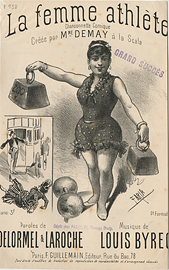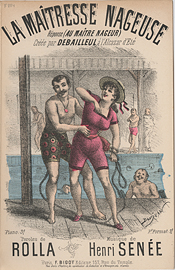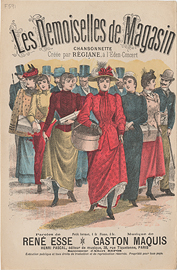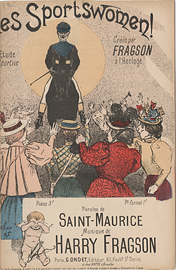Women is queen, in her element. On the days of new exhibitions or big sales, she reigns en masse, headstrong and arrogant, ruling over her salesmen-subjects as if she were in a vanquished country… It has been said that if the department store were suppressed, there would be a revolution among women… Women go there to pass the time, just as they used to go to church: it is … a place where they become impassioned, where they enter into a struggle between their passion for fashion and their husbands’ budgets.
– Émile Zola, notes for Au bonheur des dames (1883, cited in Tiersten, 2001, 15).
During the second half of the century, new avenues of leisure emerged for women, from sports and travel to shopping and strolling on Haussmann’s newly created boulevards. The popular women’s journal La Fronde observed in 1900: “The Parisienne of today goes everywhere, does everything, is interested in everything. Her life has changed completely.” Of course, participating in these activities varied according to social status. Although playing tennis or shopping were exciting new possibilities for the bourgeois woman, many working-class women had neither the resources nor the time to pursue the same pastimes.
The image of a woman on a bicycle came to epitomize the nouvelle femme, yet women engaged in a variety of other sports as well, including tennis, gymnastics, horseback riding, archery, and swimming. Perceived by some as a threat to women’s health, extolled as beneficial by others, sport became a socially acceptable activity for women. Belle Époque Paris also offered a variety of events women could attend in their free time: horseracing, circuses, concerts at the Jardin Zoologique, and music-hall spectacles. As Jacques Attali notes, these years witnessed the “birth of the popular consumption of commodity leisure” (1985, 77). While cabarets and some café-concerts remained off-limits because of their salacious repertoire and disreputable atmosphere, music halls and many café-concerts welcomed respectable bourgeois women.
The new department stores, such as the Bon Marché, offered the bourgeois woman yet another recreation: shopping, which shifted from a quotidian activity to a pleasurable pastime. The stores seduced and entertained women, allowing them to fulfill their desires for luxuries advertised in the fashion magazines of the day. Staffed by many single young women, the Bon Marché even organized leisure activities for these demoiselles de grands magasins. They could take language courses and instrumental lessons, or sing in the store’s choir. In extravagant concerts held in the main hall, well-known opera and café-concert singers performed alongside the Bon Marché choruses and wind ensembles.





